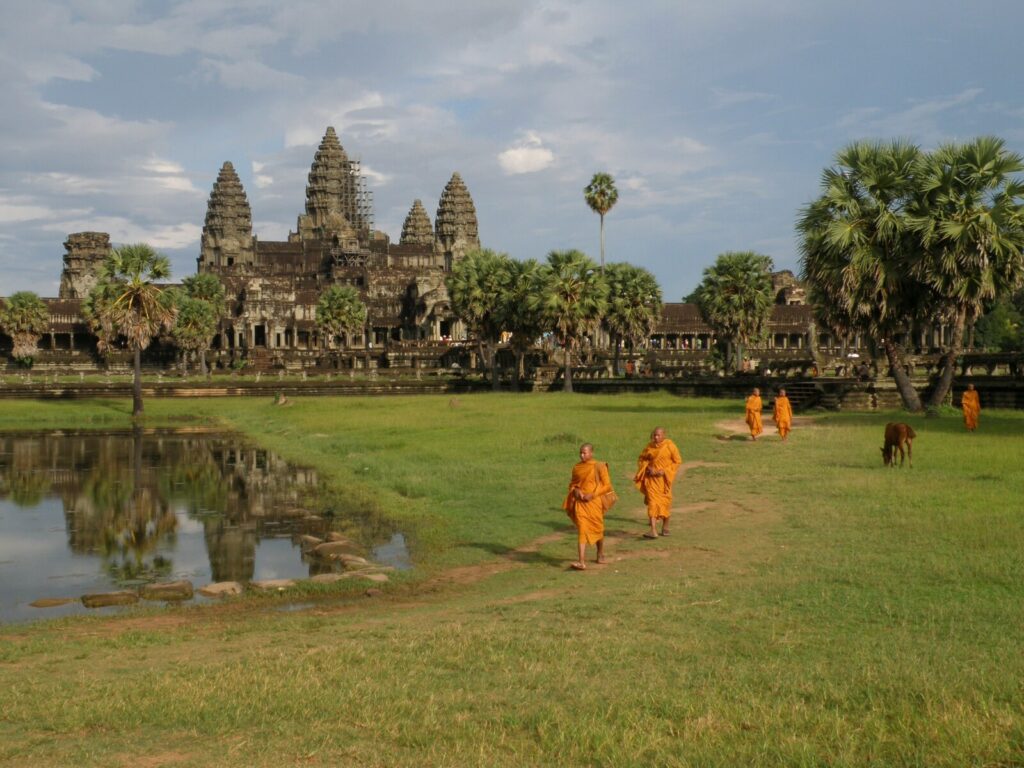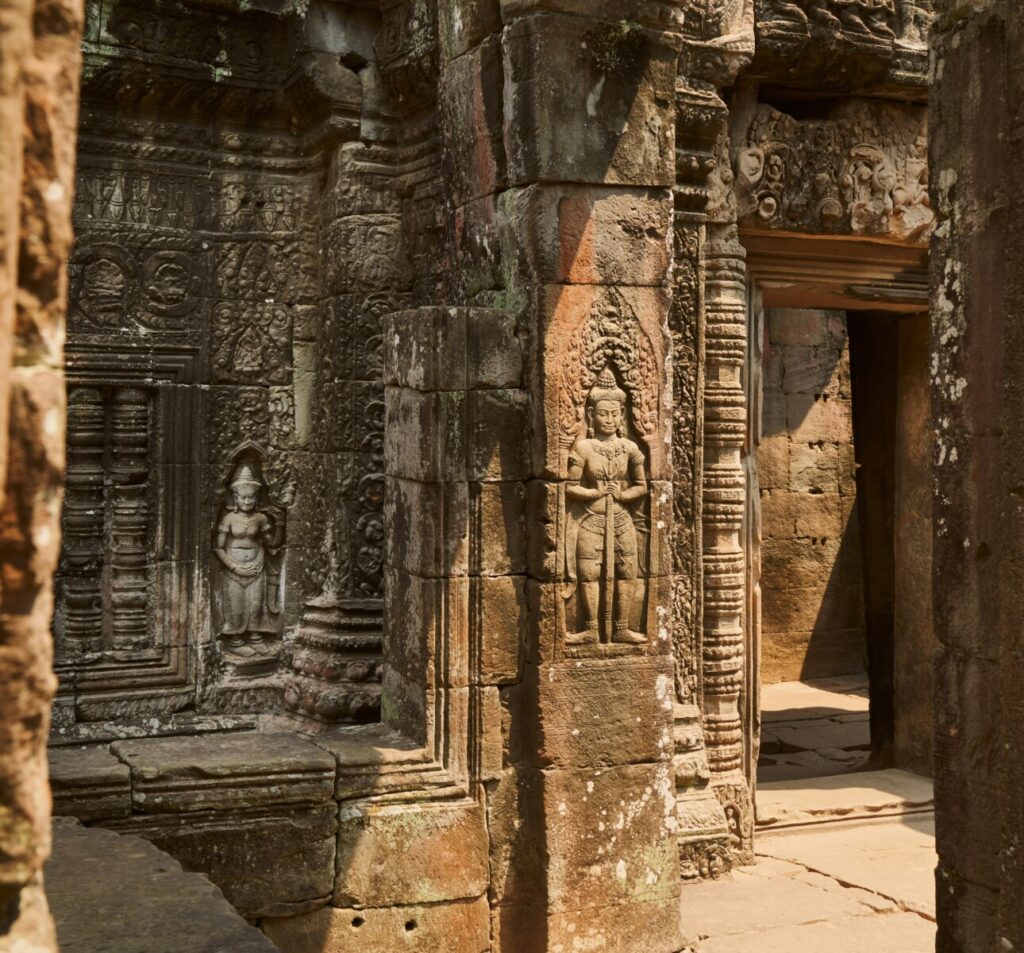We have already posted several entries about Cambodia, covering essential tips if you choose it as a destination for your volunteer experience and must-try traditional dishes.
Today, we want to tell you the story of Cambodia’s most iconic monument, Angkor Wat, which also ranks among Asia’s most famous landmarks alongside the Great Wall of China, the Taj Mahal, and the Pyramids of Egypt.

Angkor Wat is a temple known for its vast architecture and connection to the Khmer Empire. Its history dates back to the 12th century, when it was built during the reign of King Suryavarman II around 1113 AD.
It was designed as a Hindu temple dedicated to Vishnu, the preserver god in Hinduism. Its construction involved sandstone and bricks with a unique interlocking technique that required no mortar, contributing to its durability. Known for its impressive scale and sophisticated architectural design, the temple covers more than 162 hectares and is characterized by its five lotus-shaped towers, symbolizing the peaks of Mount Meru, the sacred mountain in Hindu mythology. These towers are surrounded by a moat that represents the ocean encircling the world. Angkor Wat serves not only as a place of worship but also as a symbol of the Khmer Empire’s power and grandeur. It is believed that the temple was conceived as a microcosm of the universe and a reflection of cosmic order, with a design representing the world and its connection to the heavens.
As the Khmer Empire transformed, the temple shifted from a Hindu to a significant Buddhist center, especially after the 14th century. This transformation is reflected in the architectural modifications and the inclusion of Buddhist figures in the complex. Over time, the Khmer Empire began to decline due to internal and external factors, such as invasions and governance issues. This led to the gradual abandonment of Angkor city and its temples, including Angkor Wat, which was eventually forgotten by most.
Although Angkor Wat was known to European settlers as early as the 16th century, it wasn’t until the 19th century that formal archaeological study began. French explorer Henri Mouhot is often credited with “rediscovering” the temple in 1860, sparking greater interest and appreciation for its history and architecture.
During the Cambodian Civil War (1970-1975) and the Khmer Rouge regime (1975-1979), Angkor Wat suffered damage and neglect. Despite this, the temple survived the devastation, and its restoration began in the 1980s. Since the 1990s, various governments and non-governmental organizations, including international projects, have worked on the restoration and preservation of Angkor Wat and other temples in the Angkor complex. UNESCO declared Angkor a World Heritage Site in 1992, which helped increase international attention toward its preservation.
Today, Angkor Wat is not only a national symbol of Cambodia but also a major tourist destination, attracting millions of visitors each year. It is the largest temple in the Angkor complex, designed according to the mandala layout, a symbol of the universe in Hinduism. Its rectangular structure is oriented westward, which is unusual for Hindu temples that typically face east. It is adorned with over 3,000 square meters of sculpted reliefs depicting stories from the Ramayana and Mahabharata, two Hindu epics. There are also scenes of everyday life and Khmer mythology.
Despite its popularity as a tourist destination, Angkor Wat remains an active place of worship. Many Cambodians continue to perform rituals and make offerings at the temple, especially during Buddhist and Hindu festivals.

SOME INTERESTING FACTS
As we mentioned, Angkor Wat is the largest religious monument in the world.
Its construction is estimated to have involved more than five million stone blocks and took approximately 30 years of work, requiring thousands of workers.
Another curious detail is its orientation, as noted earlier. Unlike most Hindu temples, which face east, Angkor Wat is oriented westward. This peculiarity has led to some interpretations regarding its meaning, suggesting a connection with sunset and the afterlife.
It is also considered one of the “New Seven Wonders.”
Despite being one of the most studied temples, many mysteries remain about its construction, including the logistics of transporting massive stones through the jungle.
Its design was crafted to integrate with its natural surroundings. The temple is believed to have been constructed with careful consideration of the topography, including water channels and a drainage system that helped manage monsoon rains. The Angkor complex includes not only temples but also a rich biodiversity. The area around Angkor is a habitat for diverse species of flora and fauna, making it an important ecosystem.

We know that if you travel to Cambodia, when you visit this monument, you will be left speechless and enjoy the reflection of the temple in the water, where the photo is so popular.
Cambodia awaits you with much to discover.




